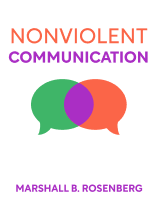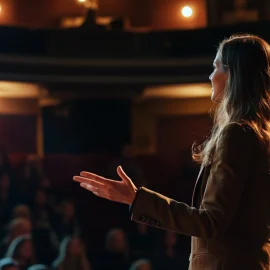

This article is an excerpt from the Shortform book guide to "Nonviolent Communication" by Marshall B. Rosenberg. Shortform has the world's best summaries and analyses of books you should be reading.
Like this article? Sign up for a free trial here .
What does “observing without evaluating” mean? How can you apply this idea in practice?
Observing without evaluating is the first step of the nonviolent communication approach. As the name suggests, it refers to communicating our observations without passing evaluative or moralistic judgment upon them.
Read about observing without evaluating and how to apply it in practice.
Observing Without Evaluating: What Does It Mean?
One fundamental component of NVC is the idea of observing without evaluating. The philosopher J. Krishnamurti calls this “the highest form of human intelligence,” perhaps because it is so difficult to do. Our brains are natural storytellers, so we often don’t even notice when we make evaluations based on what we see, hear, and feel. But evaluative language is a form of moralistic judgment that can easily alienate others by reducing them to a label rather than making a human connection.
Being fully objective is difficult and not always possible or even desirable (for example, when you have strong moral objections to someone’s behavior). In those situations, it’s still possible to use NVC as long as your language separates the observation from the evaluation. To do this, reference specific behaviors you observe—like “John used two racial slurs in our conversation yesterday” rather than “John is a racist.” Whether or not the label is warranted doesn’t matter if the goal is to have a productive conversation about the issue rather than an argument.
To make this idea more concrete, here is a table of examples. The statements on the left have observations and evaluations mixed together, while the statements on the right express the same ideas but keep observations separate from judgments.
| Type of Communication | Observation and Evaluation, Mixed | Observation and Evaluation, Separate |
| Using the verb “to be” to express opinions as facts | You’re too pessimistic. | When I hear you say, “There’s no point,” I think you sound too pessimistic. |
| Expressing opinions as facts (without the “to be” verb) | She definitely won’t win this race. | I don’t think she’ll win this race. |
| Expressing opinions as facts (through judgmental adjectives/adverbs) | This class is boring. | I struggle to pay attention in this class. |
| Judging ability as fact, rather than opinion | Reina is terrible at math. | Reina got a C on her last math test. |
| Using words with judgmental connotations | Janella procrastinates. | Janella doesn’t study for tests until the night before. |
| Confusing predictions with certainties | If you don’t stop smoking, you’ll get cancer. | If you don’t stop smoking, I’m afraid you could get cancer. |
| Attributing a description to a group rather than a specific person or interaction | Immigrants don’t want to work. | My next-door neighbor is an immigrant, and he is unemployed. |
| Making always/never generalizations | You’re always busy. | You weren’t able to come to my last two parties. |

———End of Preview———
Like what you just read? Read the rest of the world's best book summary and analysis of Marshall B. Rosenberg's "Nonviolent Communication" at Shortform .
Here's what you'll find in our full Nonviolent Communication summary :
- How nonviolent communication lets you have more compassion for yourself
- Why nonviolent communication is the key to fostering authentic connections with others
- The 4 steps to expressing yourself with empathy towards others






